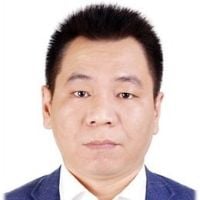Research on Laser Welding and Laser Additive Manufacturing
A special issue of Materials (ISSN 1996-1944). This special issue belongs to the section "Manufacturing Processes and Systems".
Deadline for manuscript submissions: 20 August 2024 | Viewed by 989
Special Issue Editors
Interests: additive manufacturing; laser welding; nano-manufacturing; alloys and its composites; shape memory alloys
Special Issues, Collections and Topics in MDPI journals
Interests: biocompatibility; biomaterials; manufacturing of implantable components; wettability of alloys/ceramics; laser processing
Special Issues, Collections and Topics in MDPI journals
Special Issue Information
Dear Colleagues,
With the progress of laser technology in recent decades, manufacturing in aerospace, biomedical, electronics, and other fields depends more on laser welding and laser additive manufacturing.
More and more new materials, manufacturing processes, and post treatments are being applied to change the microstructure of joints and additive manufacturing constructions, thereby improving mechanical properties and enabling formed components to be applied in harsher working environments. For example, using laser shock peening to eliminate residual tensile stress on the surface of additive manufacturing turbine blades; laser welding assembly technology for additive manufacturing components; laser additive manufacturing and welding of shape memory alloys, etc. These studies are of great significance for the development of laser processing technology.
Therefore, this Special Issue will include (but is not limited to) research on additive manufacturing of metals, ceramics, and composite materials, as well as the welding and post-treatment of related parts. Attention should be paid to the relationship between materials, structure, and properties.
Dr. Danyang Lin
Dr. Hong Bian
Prof. Dr. Xiaoguo Song
Guest Editors
Manuscript Submission Information
Manuscripts should be submitted online at www.mdpi.com by registering and logging in to this website. Once you are registered, click here to go to the submission form. Manuscripts can be submitted until the deadline. All submissions that pass pre-check are peer-reviewed. Accepted papers will be published continuously in the journal (as soon as accepted) and will be listed together on the special issue website. Research articles, review articles as well as short communications are invited. For planned papers, a title and short abstract (about 100 words) can be sent to the Editorial Office for announcement on this website.
Submitted manuscripts should not have been published previously, nor be under consideration for publication elsewhere (except conference proceedings papers). All manuscripts are thoroughly refereed through a single-blind peer-review process. A guide for authors and other relevant information for submission of manuscripts is available on the Instructions for Authors page. Materials is an international peer-reviewed open access semimonthly journal published by MDPI.
Please visit the Instructions for Authors page before submitting a manuscript. The Article Processing Charge (APC) for publication in this open access journal is 2600 CHF (Swiss Francs). Submitted papers should be well formatted and use good English. Authors may use MDPI's English editing service prior to publication or during author revisions.
Keywords
- additive manufacturing
- hybrid manufacturing
- laser welding
- nano-manufacturing
- repair and remanufacturing
- alloys and their composites
- shape memory alloys
- biomaterials








